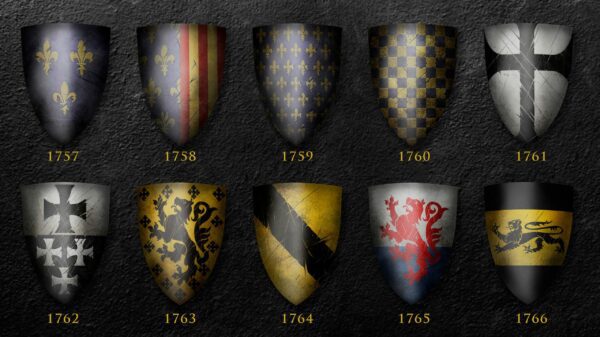-
×
 Medieval Shields 1 × USD475.00
Medieval Shields 1 × USD475.00
Game of Thrones has long been a household name among fans and medieval ‘film’ buffs. The show however has gained such grand following that the name resonates even among those who have never watched a season, an episode, a bloody battle scene or let alone a trailer. In the midst of the tremendously popular HBO show, a cult following has emerged, collecting various paraphernalia ranging from Game of thrones mugs, clothing, books, posters, banners, and among true diehard fans, even swords and Armors.
Loyal fans to, arguably the most popular show in the last decade, flock to the game of thrones exhibits, anxiously waiting to sit on the Iron Throne, examine the swords, weapons, shield and armours worn by Jon Snow, Arya Stark, Tyrion & Jaimie Lannister, Jorah Mormont, Brienne of Tarth, and of course, everyone most hated character: Joffrey Baratheon.
Game of Thrones has gained such ground in both television and popular culture that a Canadian university (university of British Columbia) has devoted an entire course to study of Game of Thrones. Entitled Our Modern Medieval: The Song of Ice and Fire as contemporary Medievalism; the course studies the impact of the show on our modern perception of the middle ages. Students are required to read the Song of Ice and Fire series in its entirety and watch the entire HBO production of Games of Thrones (5 seasons so far). According to Professor Robert Rouse, depictions of medieval times like those found in Martin’s novels “have largely supplanting any real notion of the…Middle Ages.” Indeed, popular conception of the middle ages has considerably varied over the ages. Our views and vision of what ‘life’ was like during the middle ages is greatly influenced by movies and television. While john Boorman’s Excalibur (1981) and Ladyhawke (1985) painted a picturesque notion of the medieval world with lush green grass and knights in full plate armor, reality stood in stark contrast. Less known movies such as The Seventh Seal (1957) and the Return of Martin Guerre (1982) depict a more cataclysmic approach, and somewhat of a more realistic or representative view, of the medieval world.
That said however, the University of British Columbia’s class is an interesting approach to analyze how television has changed our perceptions of the middle ages throughout history.


